Burning the Midnight Oil for Living Energy IndependenceCommunity Blog Discussions at: ProgressiveBlue, HillbillyReport.org, Docudharma, and Agent Orange.I believe that America can be greater than it ever was before.
That does not mean that its
destined to be. Destiny makes us lazy. Destiny is like those post-Tour de France cycling criteriums where the top three places were guaranteed to the three big TdF heroes taking part ~ if you are in shape and need to keep going, maybe Destiny can keep the momentum going ~ but its no way to build up to race fitness.
Indeed, it does not mean that its at all likely. It may well be massively unlikely. But whether an outcome is likely or unlikely is an issue for passive spectators, watching from the sidelines. The issue for participants is whether the game is worth the candle ~ whether the prize substantial enough to make it worthwhile playing to win.
Our modern mess media trains us to the passive observer role, with their habitual "trackside race call" coverage of public affairs. However, if we participate, that trains us in the active player role, and the real life experience is a deeper lesson than the color and noise on the noise box.
__________________
What Does It Mean for a Large Nation to be Great?If it means anything for a nation such as the United States of America to be Great, what does it mean?
For a small nation to earn the label of great ~ a New Zealand, Central African Republic (CAR), Costa Rica, Laos ~ perhaps it can do something in particular brilliantly, and everything else OK enough not to disqualify it. We do not normally call small nations "great", but its not surprising to hear that a small nation is "great at {fill_in_the_blank}." Especially "great at {fill_in_the_blank} for its size."
And maybe there is some of that for medium size and medium-big size nations, except that "for its size" implies a higher standard, the bigger it goes. What would New Zealand great for its size might fall short for Australia or Canada. What would make CAR great for its size might fall short for South Africa or the Democratic Republic of Congo. What would make Costa Rice great for its size might fall short for Venezuela or Brazil.
However, my thesis is that for the four large nations of the world ~ for China, the United States, the European Union and India ~ relative scales do not apply. Greatness for a large nation of the world must be on an absolute scale.
What does it mean to be Great in the 21st CenturyWe face existential challenges in the 21st century:
- We face the challenge of resource footprint over-reach ~ a way of life that requires more than one earth to sustainably satisfy.
- We face the challenge of self-poisoning ~ a way of life that progressively increases the toxicity of our life support system.
- We face a challenge of climate chaos ~ either an induced development or amplification {+} of the end of the mild global climates and the onset of a much more turbulent Anthropocene
- We face a challenge of Peak Oil ~ the transition from the prevailing energy base of modern industrial society because we have used it up, rather than because of the stronger appeal of an alternative
- We still face the challenge of Radioactive War ~ with no actual elimination of the standing 20th century threat of nuclear war, now augmented by the threat of various dirty bombs
And for some reason as a nation we seem to be somehow incapable of doing more than didley-squat about more than one of them at a time.
But for one of the Four Large Nations of the world to be Great, it must be great in leading the way and collaborating on all of the existential challenges we face. The footprint of each is too big. Each must carry its weight across the board, and more than carry its own weight somewhere of vital importance.
We cannot claim the mantle of greatness on the basis of "nailing down loose nukes" ~ while we pursue an energy policy that fails to nail down untapped coal reserves ~ still less if that policy
subsidizes and otherwise encourages the burning of coal. Maybe a smaller country, where its
relative reliance on coal in its national economy translates to a much smaller absolute share of total carbon emissions ~ but not the Peoples Republic of China, the Republic of India, the European Union, or the United States of America.
Clearly, what is not Great is for a Large nation to sit on its ass, hoping that some other nations will pull its irons out of the fire.
No Single Act Is Sufficient to Face an Existential ChallengeOne of the habitual, regular, predictable red herrings that Big Oil and other saboteurs of the United State of America surviving the 21st century intact is to point out that some vital action "is not enough".
Big fat hairy deal. No single action is enough in facing an existential challenge. Any challenge that can be faced down with any single action is not an existential challenge. Existential challenges require multiple mutually supporting, and often interlocking, actions to face up to them.
That reason is, first, keeps getting tosses up is because people fall for it. "Yeah, that's no enough" among those encouraged to be lazy about it translates readily into "not worth doing". But whether its worth doing is based on how irreplaceable it is, and how many support it gives to other vital actions.
And, second, because for those challenges that are clearly existential, saying "its not enough" resonates much better than "give up, all hope is lost, we are ultimately a failure as a nation and its time to try to build some other nation in this part of the world" ~ at least among the broad swathe of population between those dedicated to an action vital to our national survival and those adamantly opposed to one or more of those actions.
But while the point does not have billionaires making it, it can be conveyed to and understood by the vast majority of our civil society. Remember that the point is to communicate the point, and people across our country are familiar enough with at least one complex system to get the point: Sure a transmission is "not enough" for a car to run. An engine is not enough. Working steering is not enough. But can you drive without a transmission? Without an engine? With working steering?
We don't need a
smarter electorate, we need a
wiser electorate, and the "needed vs enough" idea is worth passing on to as many fellow citizens as you can, in whatever opportunity you can create to pass it on to your fellow citizens.
Why are We Facing So Many Existential Challenges?Cast your mind back to 1980. There are two Great Nations of the World, the United States of America and the Union of Soviet Socialist Republics. The USSR is surviving a fundamentally broken domestic economy on the back of high prices for its relatively expensive to produce oil ~ and looming over the next five years is the collapse of the real price of oil from its 1979/80 peak to a multi-decade period of cheap oil ~ not ultra-cheap oil, as when the Texas Railroad Commission was stabilizing oil prices via Texas oilfield production quotas, but still cheap.
And when the price of oil dropped, their ramshackle faux-socialist centralised authoritarian economic system collapsed together with the "second world" of the "cold war" world order. Now, if I listed Five Large Nations, I reckon I'd still have to include them (unless, of course, they are merely taking a several decades long pause in the process of falling apart) ~ but I only listed four.
China was still reeling from the twin catastrophes of Mao's deliberate promotion of population growth and the insane effort to convert the agrarian revolution of the rural commune system into an decentralized mass production industrial revolution that no amount of revolutionary fervor could ever suit it for. Deng Xiaoping is just launching the reset that unleashes the potential of the Chinese communes and then uses it to launch an actual industrial revolution ~ and the population policy that violates almost every tenet of Western social liberty, while also preventing what otherwise clearly would have been by now a collapse of central authority and descent into civil war ~ a devil's choice, but after the population policies of Mao, no angel's choice was any longer available.
India has passed through the Emergency Crisis and the stunning electoral defeat of Indira Ghandi's regime and then the subsequent collapse of a new government too experienced at opposition and inexperienced in government to hold the governing coalition together, with more years political turbulence, including Indira Ghandi's, before establishing the neo-mercantilist economic order which it has been pursuing over the past few decades. Not that political turbulence ever actually went away, but the periodic political storms did not wash away the foundations of the neo-mercantilism that had been adopted.
And the European Union? This youngest of all Four Large Nations does not even exist yet, a collection of medium-big, medium and small nation states in a divided continent, like the Greek states in the days of the Second Athenian League, before unification under Phillip II of Macedon, or the several English American colonies before the establishment of the Articles of Confederation.
In 1980, if there is a Large Nation that can act as a Great Nation and tackle potentially existential challenges before they come to a boil, that would be the United States of America. And in 1980, we elected to pursue the civil society equivalent of sitting on our fat ass and watching cartoons. And we kept it up for three decades.
Of course ongoing problems kept getting worse and worse and worse until they reached the point of existential challenges. There are
always problems emerging. Either they get regularly pruned down to size, or else they go to seed and get worse and worse and worse.
Things just don't get better automatically on their own. People that imagine that they do are just engaged in the age-old practice of ignoring them that are doing the coping with the problems. And if the only Large Nation who is a candidate to be a truly Great Nation and tackle the big problems before they become existential challenges instead decides to pretend that hammers are bad because we sometimes hit our thumbs with them, or governments are bad because the rules they put in place are sometimes inconvenient ~ well, the kinds of problems that can only be tackled by serious national policy of a large nation exercising leadership on a world stage will, of course, sit, and fester, and get worse, and worse, and worse.
Didn't Is not Can't. Its Only Didn't.If somebody didn't do something, maybe it means they couldn't. Maybe it means they could, but just didn't.
If a Large Nation does not act as a Great Nation, maybe it means it couldn't. Maybe it means it could, but just didn't.
In this case, the United States of America has the
capacity to be a Great Nation. We have the capacity to pull our weight on all the major existential challenges we face and to lead the way on many.
"Will we choose to do so? What are the chances we will choose to do so?" These are passive spectator questions. If we choose to do so, we can. So as active participants, we have to act in ways that supports our nation as a whole choosing to be Great again.
So what's the big deal about High Speed Rail, then?To get everything done, as many people as possible must do something. High Speed Rail is something.
For our Large Nation, our unchecked population explosion is the massive resource liberalism that we are indulging in creating an explosion in the cost to the earth of each member of our population.
The unsustainable deficit is the deficit between our sustainable resource base and our resource footprint.
And hoping that we can head toward a urgently necessary resource conservatism on the back of an outbreak of lifestyle asceticism seems to be an entirely vain and futile one.
So we need to find ways to do better lifestyle on less resource base per task.
Express High Speed Passenger Rail is no silver bullet along those lines, but it is a very shiny silver BB. In 100mile to 500mile corridors where population growth under business as usual will demand massive unsustainable investment in new intercity highway capacity, Express High Speed Rail is less expensive than the status quo. And where the massive hidden subsidies and cross subsidies for operating the status quo threatens to choke our economy, Express High Speed Rail in its strongest potential corridors will generate substantial operating surpluses.
Rapid Passenger Rail is no silver bullet along those lines, but it is a very shiny silver BB. In 100mile to 300mile corridors where there is existing unused rail corridor capacity and transport alternatives to private motor vehicles almost completely choked off by the multiple public and publicly mandate subsidies that "private" motor vehicles enjoy, Rapid Passenger Rail can offer an secondary alternative that can stand on its own feet on a small but viable share of the market and, again, generate an operating surplus so that they are not subject to closure with each swing of the political winds ~ and so they are not required to fight local public transport for the operating subsidies that local public transport both requires and merits.
Rapid Freight Rail is not a silver bullet along those lines, but it is a very shiny silver BB. In 800mile to 3,000mile corridors where there is sufficient long haul truck freight to expect to recoup original capital cost of these Steel Tollways through access and user fees, they offer us a chance to get half or more of those diesel guzzling, asphalt destroying, motorist terrifying behemoths off the intercity highway network, replacing them with sleep-in-your-own-bed-at-night short haul truck routes at each end connected by long Rapid Electric Freight Rail hauls in between.
So, no, High Speed Rail on its own will not make America Great.
But until we start to do things like High Speed Rail, despite and in the face of the opposition of Big Oil and other saboteurs of an American 21st Century, we will not start to be Great.
What About Greater than it Ever WasC'mon, "great" relative to 19th century Europe? Relative to 17th century China? Even a slaveholding, indigenous inhabitant massacring nation could hope to think of itself as great against that yardstick.
"Great" in the 20th century relative to the militarist authoritarian Japan or Nazi Germany, or faux-socialist centralized authoritarian USSR? Not really a bigger challenge, is it?
But looking in the rear view mirror, many of these existential challenges are problems of our own making, the elaboration of a grab and plunder and move on economic system that we mutated from land to fossil fuels without fundamentally changing.
Facing up to these challenges, confronting them, and tackling them well enough to survive through to the end of this century ~ yes, that would be truly Great.
Bedlam Bridge ~ Midnight OilThere are canyons full of movie stars,
churches made of metal
There are mountains made of muscle
We have leaders who are anxious,
we have captains not courageous
Captains tumbling into madness
But there's a man who makes no enemies,
a body never breathless
No ambition ever hopeless
Up on bedlam bridge somebody is waiting
Up on bedlam bridge I'm shot to heaven
Oh, up on bedalm bridge, waiting
Oh, up on bedlam bridge, waiting
 Nearly a month ago, Yonah Freemark had a post at The Transport Politic entitled, Los Angeles’ Streetcar Plans: Too Duplicative of Existing Services?. He wrote:
Nearly a month ago, Yonah Freemark had a post at The Transport Politic entitled, Los Angeles’ Streetcar Plans: Too Duplicative of Existing Services?. He wrote:  Yeah, OK, its not Sunday, but I got called on Saturday morning after a Friday night class to substitute for a colleague, and that threw me off completely. Fortunately for the Sunday Train, I am massively underemployed, so there is Monday afternoon available to finish composing what I been thinking about this week.
Yeah, OK, its not Sunday, but I got called on Saturday morning after a Friday night class to substitute for a colleague, and that threw me off completely. Fortunately for the Sunday Train, I am massively underemployed, so there is Monday afternoon available to finish composing what I been thinking about this week. First off, the thing to do with the BS about gutting the safety net on the excuse that the Take Everything Away Party wants to kill it is to take the idea of gutting the safety programs behind the farmhouse to the mint bed and apply a sharp ax.
First off, the thing to do with the BS about gutting the safety net on the excuse that the Take Everything Away Party wants to kill it is to take the idea of gutting the safety programs behind the farmhouse to the mint bed and apply a sharp ax.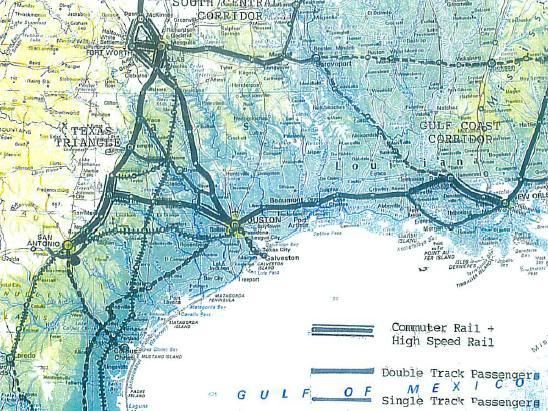 Back in the 90's, Texas tried to get an Express HSR system off the ground (that is, a bullet train system somewhere in the 125mph to 220mph range) with the "Texas Triangle" project.
Back in the 90's, Texas tried to get an Express HSR system off the ground (that is, a bullet train system somewhere in the 125mph to 220mph range) with the "Texas Triangle" project.  We in the US take the two party system for granted, but a two party system is not normal among advanced industrial countries. And, in our history, we used to have a lot more third parties with a lot more impact on our political system in the US. What happened?
We in the US take the two party system for granted, but a two party system is not normal among advanced industrial countries. And, in our history, we used to have a lot more third parties with a lot more impact on our political system in the US. What happened?
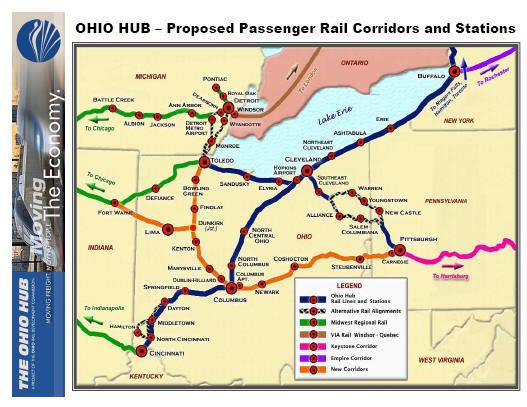 OK, now, thanks to John Kasich, we are not going to get started on that Rapid Rail HSR network before 2015. Indeed, Democrats would probably have to take back one of the two Chambers of the State Legislature to be able to hit the ground running on getting that Rapid Rail HSR network going in 2015.
OK, now, thanks to John Kasich, we are not going to get started on that Rapid Rail HSR network before 2015. Indeed, Democrats would probably have to take back one of the two Chambers of the State Legislature to be able to hit the ground running on getting that Rapid Rail HSR network going in 2015.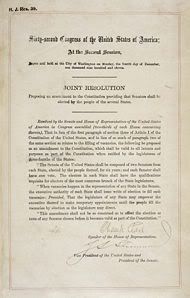 The "Progressive Era" was not so named because it was an era in which Great Progress was automatic, or effortless. It was so named because it was an era where Income Inequality was high, even by US historical standards, and extraordinarily high by the standard of the Great American Middle Class Era of the 1940's to 1970's ...
The "Progressive Era" was not so named because it was an era in which Great Progress was automatic, or effortless. It was so named because it was an era where Income Inequality was high, even by US historical standards, and extraordinarily high by the standard of the Great American Middle Class Era of the 1940's to 1970's ... Chairman Mica
Chairman Mica  The headline spin on House Chairman of the Transport Committee is that he is proposing to privatize the NEC to allow HSR to be built in this decade.
The headline spin on House Chairman of the Transport Committee is that he is proposing to privatize the NEC to allow HSR to be built in this decade. There was shocking news early this June about May economic performance: GDP growth in May was about the same as the average for the first quarter of 2011, and so employment growth was virtually stagnant, and indeed fell behind growth of the labor force.
There was shocking news early this June about May economic performance: GDP growth in May was about the same as the average for the first quarter of 2011, and so employment growth was virtually stagnant, and indeed fell behind growth of the labor force. "Why We Fight" is a common feature of propaganda in support of a war. Here, tonight, it is a double entendre. On tonight's Sunday Train, in honor of Memorial Day tomorrow, with two wars launched in the past decade and still ongoing (though in one, "combat operations" by US forces have finished, so any fighting and dying is of the support and training type of fighting and dying), and another recently started up, what it means when we notice that "why we fight" has a simple answer: oil.
"Why We Fight" is a common feature of propaganda in support of a war. Here, tonight, it is a double entendre. On tonight's Sunday Train, in honor of Memorial Day tomorrow, with two wars launched in the past decade and still ongoing (though in one, "combat operations" by US forces have finished, so any fighting and dying is of the support and training type of fighting and dying), and another recently started up, what it means when we notice that "why we fight" has a simple answer: oil.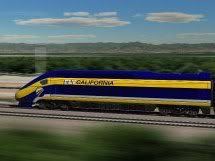 Last week, I looked at the California Legislative Analyst Office promoting a policy of raiding the California High Speed Rail funds to build commuter rail systems in LA and San Francisco by issuing what at first blush seemed to be simply a grossly incompetent analysis of the risks of building the HSR project.
Last week, I looked at the California Legislative Analyst Office promoting a policy of raiding the California High Speed Rail funds to build commuter rail systems in LA and San Francisco by issuing what at first blush seemed to be simply a grossly incompetent analysis of the risks of building the HSR project.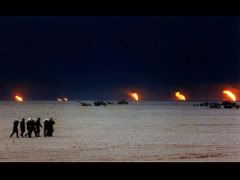 The big news on the High Speed Rail front this week is the effort by the California Legislative Analyst to prevent the High Speed Rail project in California from breaking ground. This is in two of their recommendations:
The big news on the High Speed Rail front this week is the effort by the California Legislative Analyst to prevent the High Speed Rail project in California from breaking ground. This is in two of their recommendations: 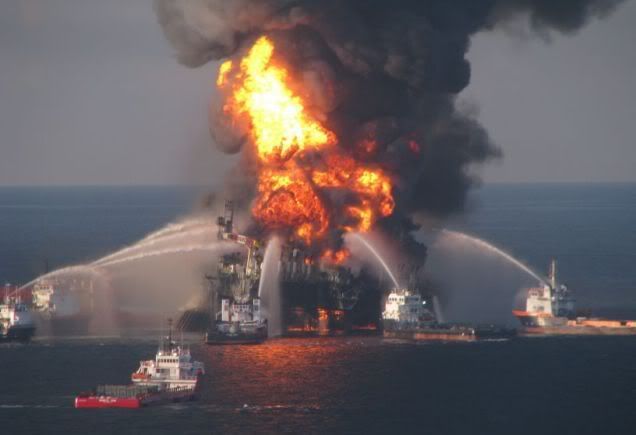
 The flashy rail projects are the very HSR projects to build bullet trains serving urban areas with millions of people.
The flashy rail projects are the very HSR projects to build bullet trains serving urban areas with millions of people. I've written several times about the direct potential of the Steel Interstate project to cut our oil imports by 10% by getting long haul freight trucking off the road. It would at the same time relieve the crushing burden imposed by long haul trucking on our over-worked, under-maintained Interstate, National and State highways, help get renewable energy resources from places that they are to places people need electricity, and of course support long distance Rapid Passenger Rail offering dramatically improved reliability and transit speed, supporting operating surpluses with multiple services per day.
I've written several times about the direct potential of the Steel Interstate project to cut our oil imports by 10% by getting long haul freight trucking off the road. It would at the same time relieve the crushing burden imposed by long haul trucking on our over-worked, under-maintained Interstate, National and State highways, help get renewable energy resources from places that they are to places people need electricity, and of course support long distance Rapid Passenger Rail offering dramatically improved reliability and transit speed, supporting operating surpluses with multiple services per day.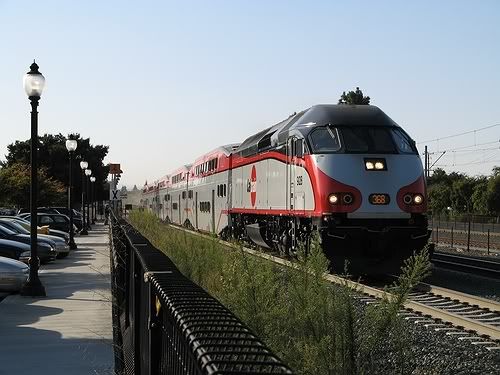 After the outcry when the Caltrain system between San Francisco and San Jose (and once in a while beyond) faced a scare that it would drop from 86 trains per day down to a peak-commute-only 48 trains per day ...
After the outcry when the Caltrain system between San Francisco and San Jose (and once in a while beyond) faced a scare that it would drop from 86 trains per day down to a peak-commute-only 48 trains per day ...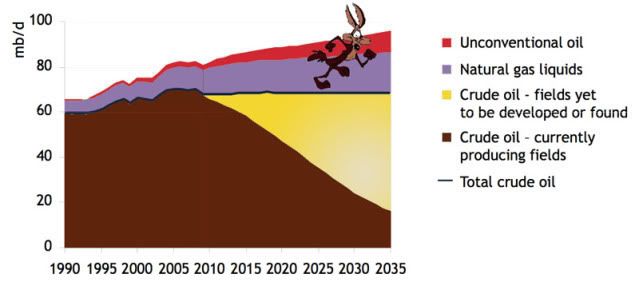 However, in addition to that is the question of developing a national economy for the US that can survive after the end of the Age of Oil and Coal. We aren't getting ready to slide down the Oil E. Coyote oil production curve, but just like Oil E Coyote, ignorance of the lack of firm footing does not really mean that the footing is actually there. And when we consider the real cost of burning our fixed domestic coal resources, it is not actually cheaper ~ its just that the entrenched privilege to use the atmosphere and landscape as a dump has allowed those vested with property rights in our national coal resource to dump the cost on others and gain a financial profit while the resource is selling below its full economic cost.
However, in addition to that is the question of developing a national economy for the US that can survive after the end of the Age of Oil and Coal. We aren't getting ready to slide down the Oil E. Coyote oil production curve, but just like Oil E Coyote, ignorance of the lack of firm footing does not really mean that the footing is actually there. And when we consider the real cost of burning our fixed domestic coal resources, it is not actually cheaper ~ its just that the entrenched privilege to use the atmosphere and landscape as a dump has allowed those vested with property rights in our national coal resource to dump the cost on others and gain a financial profit while the resource is selling below its full economic cost. Except, well, there is this law, which, as recounted by the writing swarm at
Except, well, there is this law, which, as recounted by the writing swarm at  I have emphasized the key element of the ruling. Since a state has power to impose a range of energy portfolio requirements for renewable, geothermal, biomass, waste and cogeneration, it can take the avoided cost of acquiring those energy resources into account when setting a feed-in tariff.
I have emphasized the key element of the ruling. Since a state has power to impose a range of energy portfolio requirements for renewable, geothermal, biomass, waste and cogeneration, it can take the avoided cost of acquiring those energy resources into account when setting a feed-in tariff. The Republicans have won one of the established political Power Positions in American Politics, and so they
The Republicans have won one of the established political Power Positions in American Politics, and so they  What was Resident George W Bush really attempting here? Look a little closer
What was Resident George W Bush really attempting here? Look a little closer  So one fear is something like the system sketched to the right. While very heavily subsidized services like The Cardinal and The Hoosier could see very substantial increase in ridership with only a small drop in total subsidy, each 1% in revenue growth in services like the Palmetto and Meteor means a 1% or greater drop in subsidy per service mile.
So one fear is something like the system sketched to the right. While very heavily subsidized services like The Cardinal and The Hoosier could see very substantial increase in ridership with only a small drop in total subsidy, each 1% in revenue growth in services like the Palmetto and Meteor means a 1% or greater drop in subsidy per service mile.

 I've mentioned several times that there are lots of Federal Rail Authority regulations that are impediments to developing sustainable transport in the United States.
I've mentioned several times that there are lots of Federal Rail Authority regulations that are impediments to developing sustainable transport in the United States.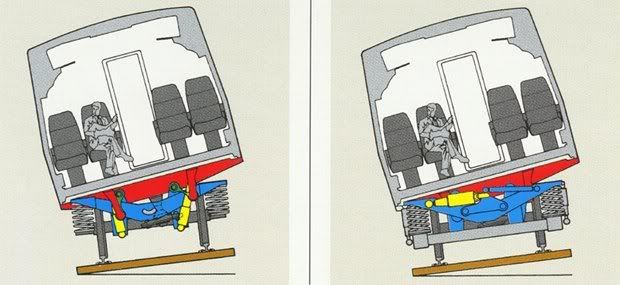 Tilt-trains effectively act to add extra camber to passenger car. This is important in that the speed that the train can safely operate on the track normally includes speeds that will throw the passengers around inside the train.
Tilt-trains effectively act to add extra camber to passenger car. This is important in that the speed that the train can safely operate on the track normally includes speeds that will throw the passengers around inside the train. To get an idea of the importance of speed limits through curves, consider the diagram to the right. This is the
To get an idea of the importance of speed limits through curves, consider the diagram to the right. This is the 
